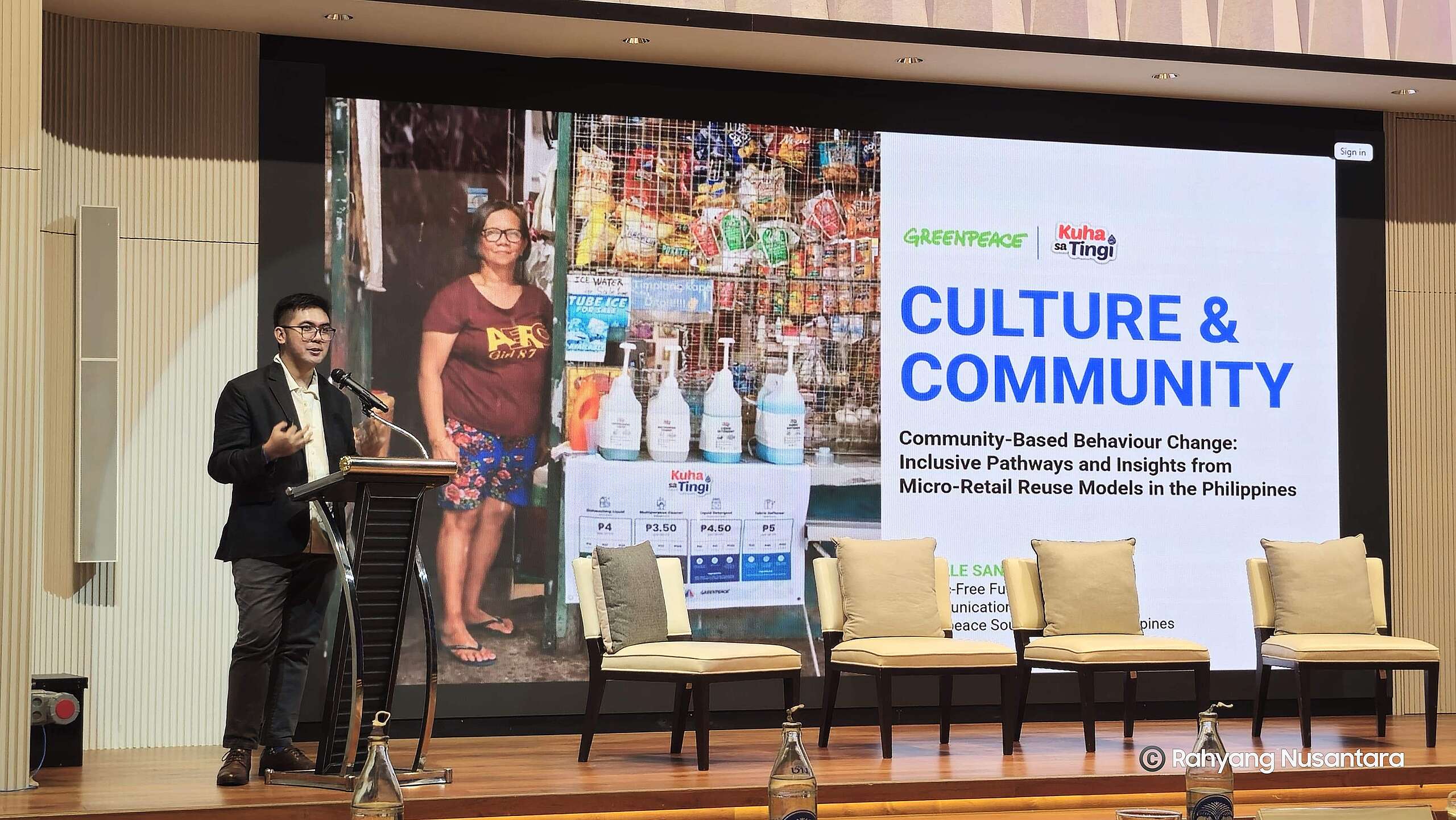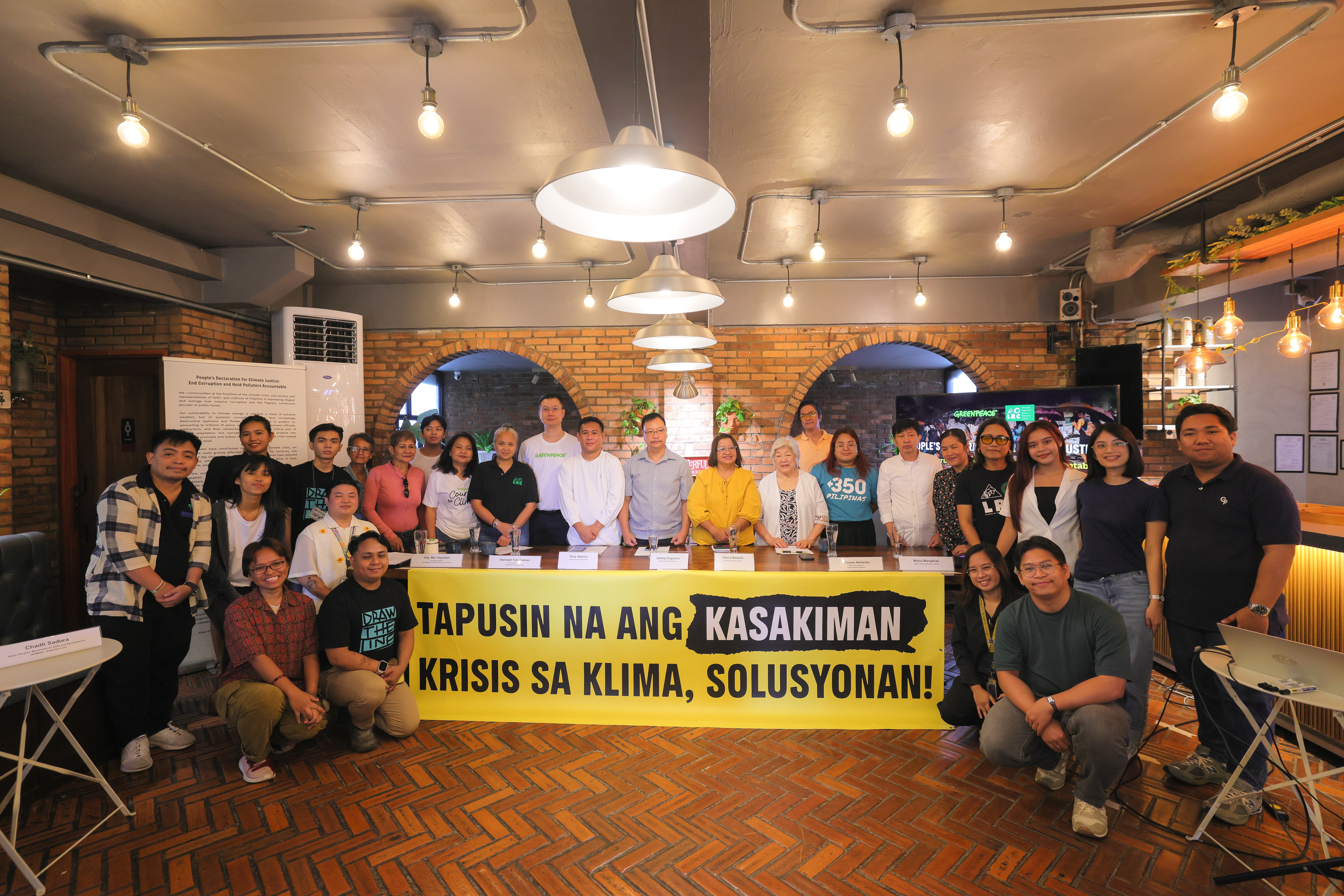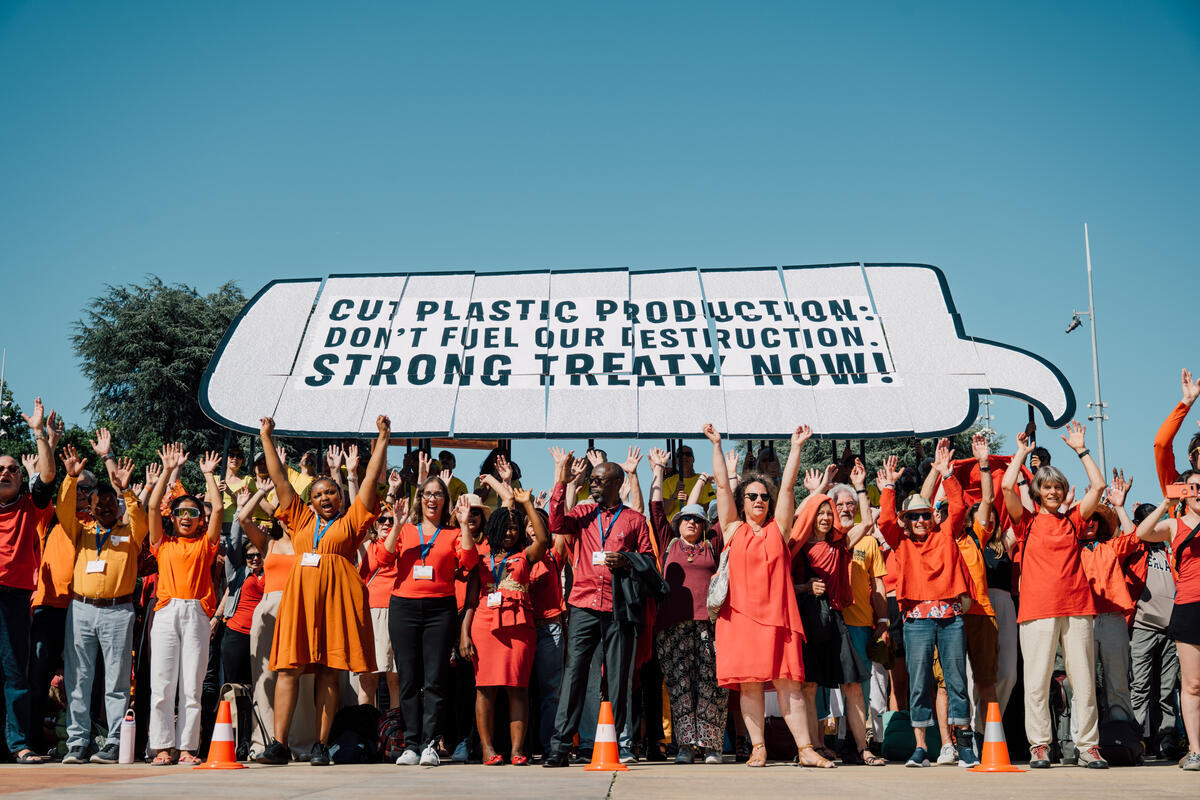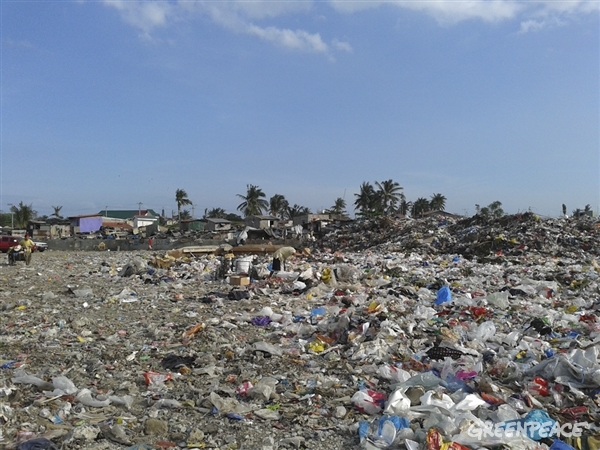
All of us produce waste each day, and what you or I consider waste might not be worthless to someone else. But have you ever wondered where our personal, household, and office wastes are being disposed? Have you ever asked where your waste goes, what happens to it once you throw it out and what are its consequences? I had the opportunity to find out when I got to go and inspect an open dumpsite that was the subject of several complaints in Cavite City.
Owned and operated by the Cavite City local government, the Cavite City dumpsite was investigated by the Department of Environment and Natural Resources (DENR) who deemed it “stinky” for a number of reasons. Acting on a tip, a team from Greenpeace Southeast Asia, EcoWaste Coalition, Cavite Green Coalition, and an ABS-CBN TV crew from the show Bistado paid a surprise visit to the area to investigate the perils posed by the open dumpsite that sits right along Manila Bay.
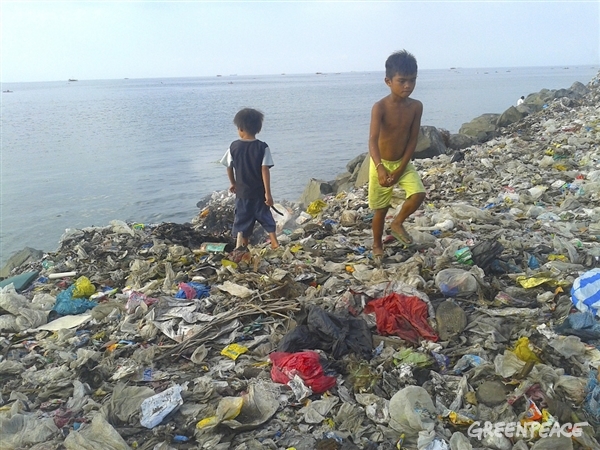 When we arrived at the dumpsite, we were welcomed by the unbearable smell of decomposing waste that made us want to stay in the car. The awful whiff was caused by a cocktail of mixed wastes–from plastic bags, rotting food, to shavings of pigs’ hairs. Clearly, it’s a huge mess with both biodegradable and non-biodegradable wastes all muddled together. As I got nearer and walked through the jumbled refuse, I asked myself, if this comparatively small dumpsite owned and operated by the local government can be grossly mismanaged and liable to so many environmental and sanitary violations, how are other bigger and more notorious dumpsites operating in Bulacan, Navotas, and Rizal-which are causing misery to the people and the surrounding environment-being managed?
When we arrived at the dumpsite, we were welcomed by the unbearable smell of decomposing waste that made us want to stay in the car. The awful whiff was caused by a cocktail of mixed wastes–from plastic bags, rotting food, to shavings of pigs’ hairs. Clearly, it’s a huge mess with both biodegradable and non-biodegradable wastes all muddled together. As I got nearer and walked through the jumbled refuse, I asked myself, if this comparatively small dumpsite owned and operated by the local government can be grossly mismanaged and liable to so many environmental and sanitary violations, how are other bigger and more notorious dumpsites operating in Bulacan, Navotas, and Rizal-which are causing misery to the people and the surrounding environment-being managed?
In DENR’s report, dated December 2013, the Cavite City dumpsite was found in violation of the following laws:
- 1987 Philippine Constitution: Art. 2 Sec. 16 of the Philippine Constitution, which is the foundation and basis of all republic acts and writs, states that “The State shall protect and advance the right of the people to a balanced and healthful ecology in accord with the rhythm and harmony of nature.”
- RA 9003 or Ecological Solid Waste Management Act of 2000: Sec. 37 of the RA disallows the utilization of open dumps for solid waste. The act further states “Open dump sites shall not be allowed as final disposal sites. If an open dump site is existing within the city or municipality, the plan shall make provisions for its closure or eventual phase out within the period specified under the framework and pursuant to the provisions under Sec. 37 of this Act.” The phase-out period for open and controlled dumpsites as specified in the law is 2002 and 2004, respectively.
- Supreme Court Decision G.R. Nos. 171947-48 or Writ of Continuing Mandamus: The writ mandates 13 government agencies “to clean up, rehabilitate, and preserve Manila Bay.” DOH and DENR-EMB are also directed to “develop a toxic and hazardous waste management system by June 30, 2011 which will implement segregation of hospital/toxic/hazardous wastes and prevent mixing with municipal solid waste.”
- RA 8749 or Philippine Clean Air Act of 1999: Sec. 20 says that “Local government units are hereby mandated to promote, encourage and implement in their respective jurisdiction a comprehensive ecological waste management that includes waste segregation, recycling, and composting.”
- RA 9275 or Philippine Clean Water Act of 2004: Sec. 27 prohibits the “Discharging, depositing or causing to be deposited material of any kind directly or indirectly into the water bodies or along the margins of any surface water, where the same shall be liable to be washed into such surface water, either by tide action or by storm, floods or otherwise, which could cause water pollution or impede natural flow in the water body.”
Greenpeace, EcoWaste, Cavite Green Coalition and Bistado confronted Cavite City Mayor Bernardo “Totie” Paredes about his city’s dumpsite. He declared that the city is actually too small compared to other Cavite cities to initiate waste segregation. Clearly, he is not enlightened on the matter as his quick-fix solution was to either burn the waste (which 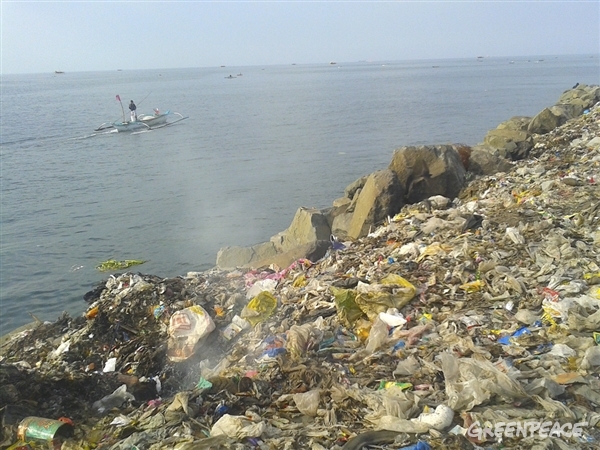 releases toxic emissions), or to transfer it to another place, far from his backyard.
releases toxic emissions), or to transfer it to another place, far from his backyard.
We told the Mayor that he should uphold the laws in his small municipality and strictly implement the Ecological Solid Waste Management Act particularly the provision on segregation at source. Separating the biodegradables from the non-biodegradables already takes care of 50% of the waste. Further segregation of recyclables is likely to take care of another 40% or more, leaving only 10% or less that needs to be managed and lasting solution found.
We also suggested that the city government train and invest on waste-pickers to educate them on how to properly handle waste. This will not only uplift their morale, but will also ensure their health and safety. EcoWaste Coalition and the Cavite Green Coalition are already working with waste pickers in the area for their eventual retraining, so that they can become part of the formal waste management system in their communities.
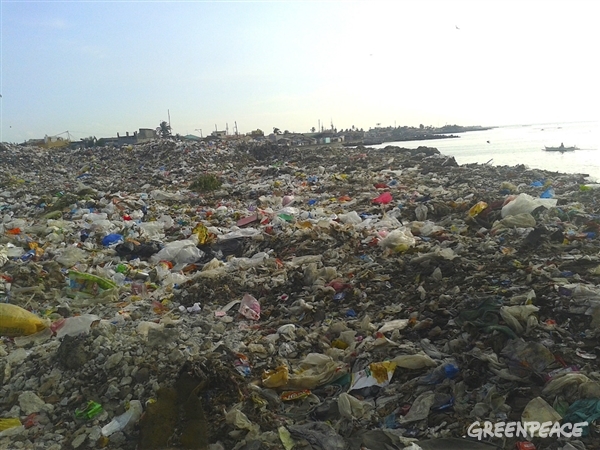
The Cavite City dumpsite is just one of the many dumpsites that Greenpeace has investigated and taken action on.
In July 2013, the EcoWaste Coalition, Greenpeace activists and the crew from the ship the Greenpeace ship Esperanza, attempted to close down Pier 18, a notorious dumpsite operating along the shores of Manila Bay. Aside from violating environmental laws mentioned earlier, the dumpsite’s geographical site goes against the Writ of Continuing Mandamus to clean up, preserve and rehabilitate Manila Bay.
In June 2009, Greenpeace and other environmental groups blockaded the Taytay, Rizal open dumpsite on the shore of Laguna Lake. It was reiterated that appropriate and genuine clean up shall be made and wastes shall not merely be covered up by soil.
And back in August 2008, Greenpeace twice halted the Angono, Rizal dumpsite’s operation by putting a barrier at the entrance, declaring the Laguna Lake Dumpsite closed.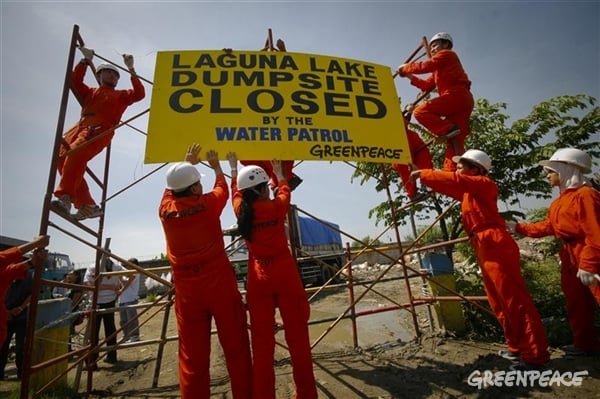
Metro Manila has a population of almost 12 million. The wastes situation in the metropolis will continue to worsen if people refuse to help out and do their share in proper segregation. In fact, we have the power to do something proactively about it same as the very people who sit in power.
My simple challenge to the public is this: Can we cut down dramatically on waste generation by refusing plastic bags and other extra packaging? Can we put that food wrapper or tetra pack in the right segregation bin instead of littering? My bigger challenge to policy makers is this: Can you muster unwavering political will to implement environmental laws and to sponsor social entrepreneurship projects through waste recycling and composting in your respective communities?
Dear friends, let’s act together for the sake of our city, our country, our planet!
Diah is the Media Assistant for Greenpeace Southeast Asia based in the Philippines. Follow her on Twitter via @DiahAbida.

